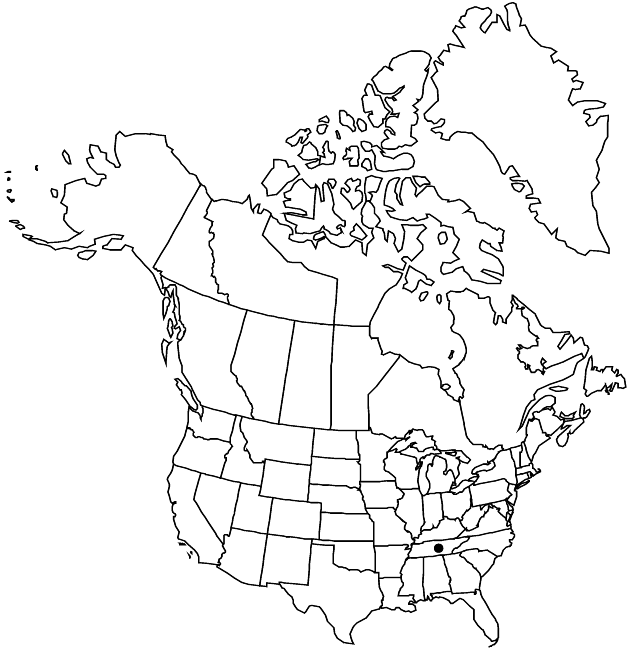Echinacea tennesseensis
Man. S.E. Fl., 1421, 1509. 1933.
Plants to 50 cm (roots elongate-turbinate, branched). Herbage sparsely to densely hairy (indument relatively soft, hairs spreading, to 2+ mm). Stems yellowish green becoming tan. Basal leaves: petioles 2–10 cm; blades 1-nerved or 3-nerved, linear to lanceolate, 6–12 × 0.7–1.5 cm, bases attenuate, margins entire (usually ciliate). Peduncles 8–25+ cm. Phyllaries lanceolate to ovate, 5–10 × 1.5–2.5 mm. Receptacles: paleae 9–12 mm, tips purple, 2–3 mm, often incurved, rounded to acute. Ray corollas pink to purplish, laminae spreading to reflexed, 20–40 × 3–4 mm, moderately hairy abaxially. Discs conic, 10–25 × 15–25 mm. Disc corollas 5.5–6.5 mm, lobes usually purple. Cypselae tan, 4–5 mm, faces smooth, glabrous; pappi to ca. 1.2 mm (major teeth 0–4). 2n = 22.
Phenology: Flowering in summer.
Habitat: Dry, rocky hills, barrens
Elevation: 100–200 m
Discussion
Of conservation concern.
Echinacea tennesseensis is in the Center for Plant Conservation’s National Collection of Endangered Plants.
Selected References
Lower Taxa
"broader" is not a number.
